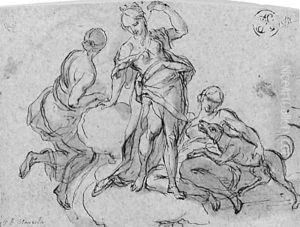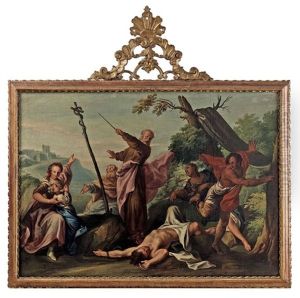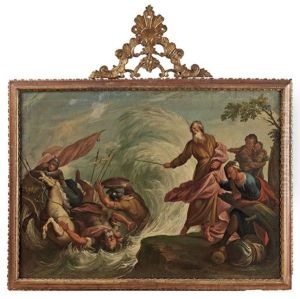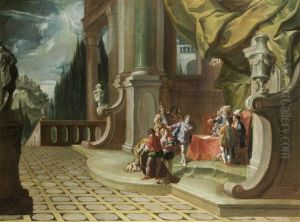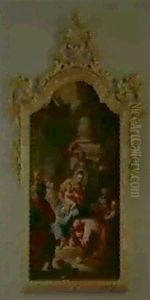Giovanni Battista Marcola Paintings
Giovanni Battista Marcola was an 18th-century Italian painter, born in 1725 in Verona, a city renowned for its rich artistic heritage during the Italian Renaissance and Baroque periods. Marcola's career unfolded during a time when the Rococo style, characterized by its elegant and ornate qualities, was beginning to give way to Neoclassicism. This transitional period in art history, however, did not see Marcola as a leading figure in the dramatic shifts in taste and style; rather, he was a competent artist who managed to carve out a respectable career within the constraints of his regional and stylistic milieu.
Marcola's oeuvre primarily consisted of religious works, landscapes, and portraits, mirroring the prevalent genres of his time. His style was deeply influenced by the Venetian school, particularly the work of artists like Giovanni Battista Tiepolo, known for their vibrant color palette and dynamic compositions. Yet, Marcola's work did not simply mimic his predecessors; he infused his paintings with a personal touch, often blending the grandeur of the Baroque with the delicacy and lightness of Rococo.
Despite the quality of his work, Giovanni Battista Marcola did not achieve the same level of fame as some of his contemporaries. His life and career were largely confined to Verona and its surroundings, where he contributed significantly to the local artistic landscape. Marcola's paintings can be found in several churches and collections in the region, where they continue to be appreciated for their craftsmanship and historical value.
Marcola passed away in 1793, at the age of 68. While he may not have gained widespread recognition, his contributions to the art of his region and period remain valuable. Today, Marcola is remembered as a skilled artist who navigated the changing tastes of the 18th century with grace and professionalism, leaving behind a body of work that continues to be studied and admired by art historians and enthusiasts alike.
